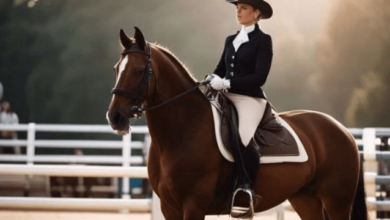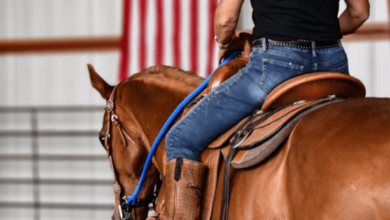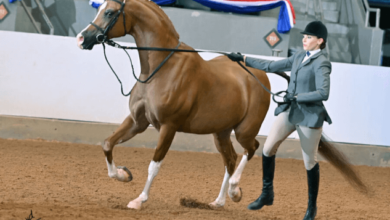What are the different gaits in western pleasure?

Western Pleasure is a popular and highly respected discipline in the world of equestrian sports, known for its emphasis on smooth, fluid gaits and the overall refinement of horse and rider. The primary objective of Western Pleasure is to showcase the horse’s ability to perform a series of gaits with grace, poise, and control. In this sport, a well-trained horse must display various gaits that are balanced, collected, and executed with minimal visible effort from the rider. To fully understand the discipline, it is essential to explore the different gaits exhibited in Western Pleasure and how they contribute to the overall judging criteria.
The Importance of Gaits in Western Pleasure
Gaits are the core aspect of Western Pleasure, as the discipline revolves around the smoothness, rhythm, and consistency of the horse’s movement. In a Western Pleasure competition, horses are judged on their ability to maintain a steady cadence while exhibiting a relaxed and responsive demeanor. The ultimate goal is to make the ride appear effortless and enjoyable for both horse and rider, which places significant emphasis on the quality of the horse’s gaits. The horse should look like it is moving freely, with minimal resistance, all while maintaining a controlled and composed frame.
1. Walk
The walk is the slowest and most basic gait in Western Pleasure, but that doesn’t diminish its importance. It’s a four-beat gait, where each foot hits the ground independently in a specific sequence. In Western Pleasure, the walk should be relaxed, rhythmic, and purposeful, with the horse moving straight and evenly. A good walk demonstrates the horse’s calm temperament and obedience, as it must maintain this gait without rushing or appearing anxious.
A Western Pleasure horse is expected to walk with its head carried in a natural position, its neck slightly arched, and its body moving in a steady, forward motion. The horse’s steps should be soft and deliberate, showing no signs of tension. Riders are often asked to extend or lengthen the walk during the class, showcasing the horse’s ability to cover more ground while maintaining the same calm demeanor.
2. Jog
The jog is a two-beat diagonal gait where the horse moves with a distinct rhythm. In this gait, the horse’s front leg on one side and the hind leg on the opposite side move together, creating a smooth, balanced motion. The jog is the equivalent of a trot in English riding but is performed with a slower, more collected pace in Western Pleasure.
A quality jog in Western Pleasure should appear comfortable and fluid, with minimal bounce. Judges look for horses that jog with their heads level, ears forward, and an overall relaxed expression. The horse should appear as though it could jog all day without tiring, maintaining a steady pace and consistent rhythm. Riders are expected to sit quietly in the saddle, without bouncing or disrupting the horse’s movement, emphasizing the natural fluidity of the horse’s gait.
In Western Pleasure, there is also the “extended jog,” where the horse is asked to increase its stride length without increasing the speed of the gait. This variation showcases the horse’s athleticism and ability to lengthen its stride while remaining smooth and controlled.
3. Lope
The lope is a three-beat gait that is the Western Pleasure equivalent of the canter in English riding. It is one of the most defining gaits in Western Pleasure, and it requires a high degree of balance and collection. At the lope, the horse moves in a rhythmic sequence where one hind leg strikes the ground first, followed by a diagonal pair of legs, and finally, the remaining front leg.
In a Western Pleasure lope, judges look for a slow, collected pace that is smooth and relaxed. The horse should maintain a natural head carriage, with its nose slightly in front of the vertical, and move with an easy, flowing stride. The rider should sit deep in the saddle, without excessive movement, as the horse lopes effortlessly. The horse’s movement should appear as though it is in slow motion, with each stride covering ground while maintaining a controlled and balanced posture.
Similar to the jog, there is also an extended lope, where the horse is asked to cover more ground with a longer stride, but without significantly increasing the speed. This allows the judges to assess the horse’s ability to perform at different paces while maintaining the desired smoothness and collection.
4. Extended Gaits
Both the jog and lope have extended versions that are often showcased in Western Pleasure competitions. The extended gaits highlight the horse’s versatility and ability to transition between different speeds and stride lengths while maintaining balance and rhythm. When performing the extended jog or extended lope, the horse should remain calm and controlled, with a noticeable increase in stride length but without appearing rushed or hurried.
In an extended jog, the horse should move with more energy, covering more ground with each step, while maintaining the same smooth, two-beat rhythm. The extended lope requires the horse to increase its stride length while keeping the three-beat sequence intact. These gaits test the horse’s responsiveness to the rider’s cues, as well as its overall athletic ability.
5. Backup
Although not a gait in the traditional sense, backing up is an essential maneuver in Western Pleasure. Horses are often required to back up in a straight line as part of the competition, demonstrating their obedience and responsiveness to the rider’s aids. The backup should be smooth and controlled, with the horse stepping back lightly and evenly, maintaining a straight line without resistance.
The backup is typically performed after the horse has halted, and it should be done with minimal visible effort from the rider. Judges look for horses that back up willingly, without tossing their heads or resisting the reins. A smooth and responsive backup reflects the horse’s training and its ability to work in harmony with its rider.
6. Transitions Between Gaits
In addition to the individual gaits, the transitions between gaits are a crucial aspect of Western Pleasure. Horses are often judged on their ability to smoothly and effortlessly transition from one gait to another, without any abrupt changes or signs of resistance. A well-trained Western Pleasure horse should transition from the walk to the jog, from the jog to the lope, and back down again with ease, maintaining its balance and composure throughout.
Judges pay close attention to how the horse responds to the rider’s cues during these transitions. A smooth transition demonstrates the horse’s willingness to listen to the rider and its ability to maintain a collected frame while changing speed and gait. Transitions are also an opportunity for riders to showcase their control over the horse, as well as the horse’s responsiveness and training.
The Role of Collection in Western Pleasure Gaits
A key element in all Western Pleasure gaits is the concept of collection. Collection refers to the horse’s ability to carry itself in a balanced and controlled frame, with its weight shifted toward the hindquarters and its back slightly rounded. This allows the horse to move with more precision and ease, making its gaits smoother and more fluid.
In Western Pleasure, a horse that moves in a collected frame will appear more controlled and balanced, which is essential for maintaining the slow, steady pace required in the discipline. Collection also helps the horse remain responsive to the rider’s aids, allowing for smoother transitions and more refined movement overall. A collected horse will perform its gaits with less visible effort, making the ride appear effortless and graceful.
Judging Criteria for Western Pleasure Gaits
In Western Pleasure competitions, judges evaluate horses based on several criteria related to their gaits. These include:
- Consistency: Horses must maintain a consistent rhythm and pace throughout the performance, without speeding up, slowing down, or breaking gait.
- Smoothness: The gaits should be smooth and comfortable to watch, with minimal bounce or jarring movement.
- Responsiveness: Horses should respond promptly and willingly to the rider’s cues, especially during transitions between gaits.
- Head and Neck Carriage: The horse’s head should be carried in a natural position, with the neck slightly arched and the nose slightly in front of the vertical.
- Relaxation: The horse should appear calm and relaxed, without showing signs of tension, resistance, or anxiety.
These factors, combined with the overall presentation of the horse and rider, determine the final score in a Western Pleasure class.
Conclusion
Western Pleasure is a discipline that places great emphasis on the quality and execution of the horse’s gaits. From the walk to the lope, each gait must be performed with smoothness, control, and consistency, reflecting the horse’s training and natural athleticism. By mastering these different gaits, a Western Pleasure horse can showcase its elegance, responsiveness, and willingness to work in harmony with its rider, all while making the ride appear effortless. Whether it’s the slow, relaxed jog or the flowing, balanced lope, the gaits of Western Pleasure are a true testament to the skill and refinement of both horse and rider.



